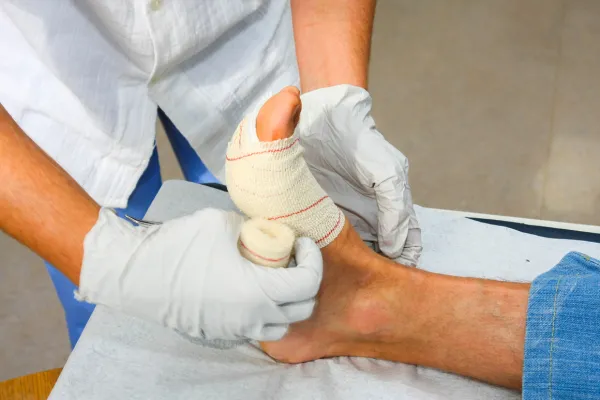
Stages of Wound Healing: What’s Normal and When to Worry
You Got a Wound—Now What?
Whether it’s a small sore, a diabetic foot ulcer, or a cut that just won’t heal, understanding how wounds are supposed to heal can help you spot problems early.
At American Surgeons Group, we see all types of foot and leg wounds. And the truth is—many folks wait too long to get help, thinking slow healing is “normal.”
It’s not.
We’ll break down the 4 stages of wound healing, how long each one usually takes, and how to tell if it’s time to call in a specialist.
Stage 1: Hemostasis – The Body Hits the Brakes
What’s happening?
Right after an injury, your body jumps into action to stop the bleeding. Blood vessels constrict, and clotting begins.
What you’ll notice:
Bleeding slows down or stops
The area may feel warm or sting
You might see a scab starting to form
How long it lasts:
This stage usually lasts a few minutes to several hours.
Normal: Bleeding stops fairly quickly and a protective scab forms.
Not normal: Bleeding won’t stop after pressure is applied—or you're on blood thinners and it keeps restarting.
Stage 2: Inflammation – The Body Clears the Area
What’s happening?
Your immune system sends white blood cells to fight off germs and clear away damaged tissue. This is a necessary step!
What you’ll notice:
Swelling, redness, and tenderness
The wound may look puffy
It might feel warm or itchy
How long it lasts:
Usually 2 to 5 days.
Normal: Mild swelling and redness, slight discomfort.
Not normal: Lots of pain, pus, foul smell, or red streaks going up your leg. Those are signs of infection.
Stage 3: Proliferation – Building New Tissue
What’s happening?
Your body starts rebuilding. New tissue forms, and the wound starts closing. Tiny blood vessels grow to bring nutrients to the area.
What you’ll notice:
Wound edges start pulling together
Pink or red tissue forms (called “granulation tissue”)
Less pain and swelling
How long it lasts:
Can last days to weeks, depending on the size and depth of the wound.
Normal: Pink, bumpy tissue that slowly fills in the wound.
Not normal: Tissue turns dark, wound gets deeper, or doesn’t shrink after a couple of weeks.
Stage 4: Maturation (or Remodeling) – Strengthening the Skin
What’s happening?
The wound closes completely, and the new skin strengthens over time. Scar tissue forms as the final layer of healing.
What you’ll notice:
The wound is closed
Skin may look shiny or tight
Some itching or sensitivity is common
How long it lasts:
This can take months—even up to a year.
Normal: No more open wound, skin continues to improve slowly.
Not normal: Wound breaks open again, scar feels hot or painful, or new sores pop up nearby.
When to Worry: Red Flags to Watch For
If you notice any of these, don’t wait:
The wound isn’t smaller after 2 weeks
New or worsening pain, redness, or swelling
Yellow, green, or foul-smelling drainage
Fever or chills
You can see black tissue, which may mean tissue death
The wound opens back up after closing
People with diabetes, poor circulation, or a history of ulcers should always be extra cautious.
How a Podiatrist Can Help Wounds Heal Faster
We’re not just foot doctors—we’re your wound care team.
At American Surgeons Group in Chicago, we treat:
Diabetic foot ulcers
Leg ulcers
Pressure sores
Infected wounds
Non-healing surgical incisions
Using advanced tools like debridement, laser therapy, orthotics, and custom wound dressings, we support healing from the ground up—literally.
Final Thoughts
Healing takes time, but it shouldn’t take forever. If your wound isn’t healing the way it should, or something just feels off, don’t ignore it.
The earlier we step in, the better the outcome.
Need Help with a Slow-Healing Wound?
Schedule a visit with our team today. We’re here to help your feet—and your whole body—heal safely and comfortably.
